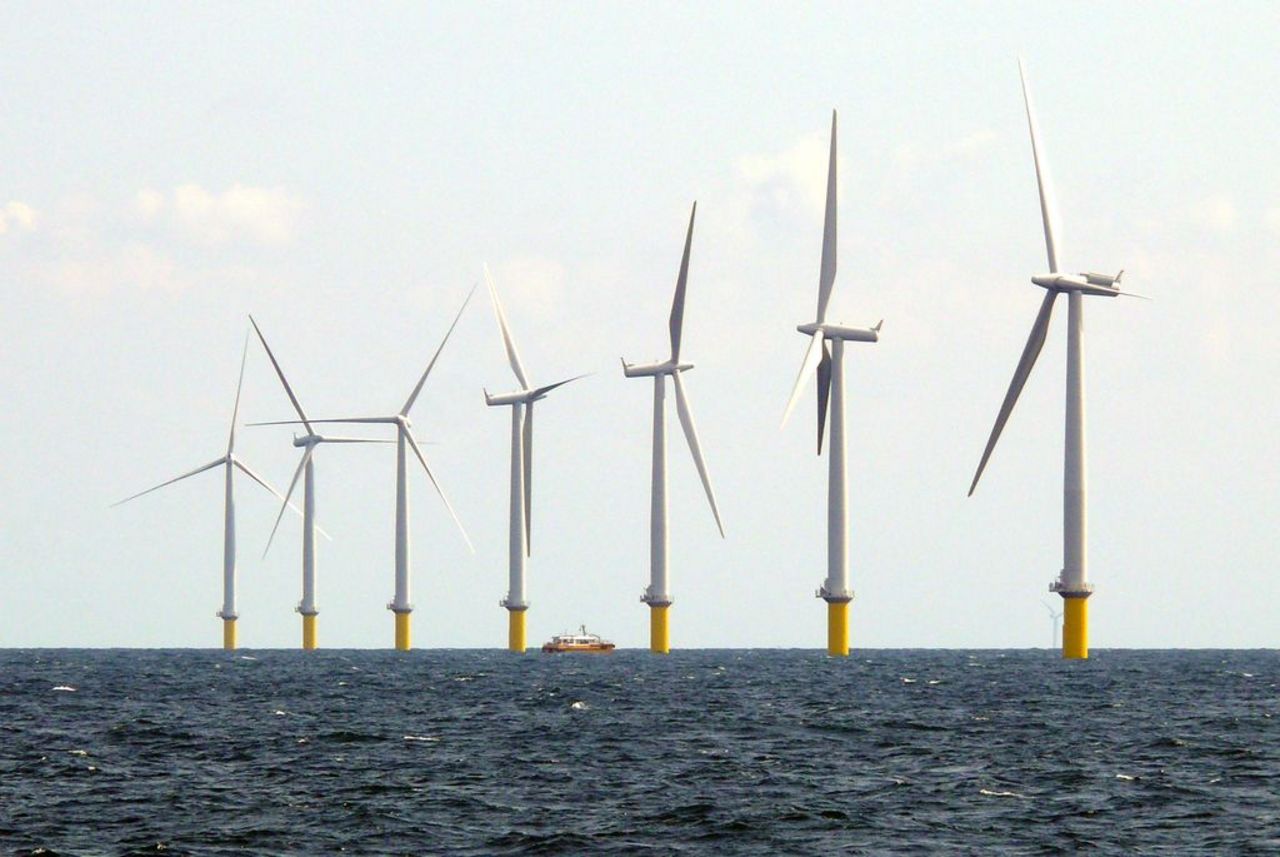Project
Combination of offshore wind parks and marine aquaculture in the North sea - a realistic scenario?

Offshore Site Selection for a sustainable and multi-functional use of marine areas in heavily utilized seas with the North Sea as an example (OSS)
The project OSS aims to create a 'multi-use road map' using the example aquaculture in combination with other infrastructures, such as offshore-wind farms as well as new strategies in the field of passive fisheries.
Background and Objective
Within the framework of the entire project to develop criteria for the site selection for offshore aquaculture systems in combination with offshore wind farms, TI-FI will work on biological parameters in order to establish a balance between nutrient import via feed and nutrient export via harvest of cultured fish, molluscs and seaweed in an integrated multitrophic aquaculture system (IMTA). The objectives of TI-SF are the establishment of a suitable geodatabase, definition of areas for co-utilization for energy generation and aquaculture, the evaluation of possible scenarios for such systems as well as the analysis of the economic feasibility including cost accounting and investment appraisal.
Target Group
Policy maker, public, science, decision maker
Approach
Establishment of a standardised geodatabase, definition of areas for aquaculture, definition of areas for co-utilisation for energy generation and aquaculture, evaluation of possible scenarios for such systems; analysis of the economic feasibility including cost accounting, and investment appraisal.
Data and Methods
Methods: Universal kriging techniques, Analytical Hierarchy Process (AHP), Fuzzy membership function, Geographic Information System-based Multi Criteria Evaluation (GIS MCE).
Data: temperature (°C), salinity (PSU), nitrate/nitrite (NO2-/NO3- [µM/L]), phosphate (PO43- [µM/L]), chlorophyll a (µg/L), oxygen (ml/L), ammonium (NH4+ [µM/L]), wave height (m), current velocity (m/s) and the respective offshore wind farm areas designated by the Federal Maritime and Hydrographic Agency (effective from December 2013).
Our Research Questions
- Which aquaculture candidate is suitable to be cultured in the German Exclusive Economic Zone (EEZ) of the North Sea?
- Where are the most suitable sites for aquaculture in the German EEZ of the North Sea?
- Where are the most suitable sites for multi-functional use in the German EEZ?
- Which methods and tools support future planning activities?
Results
From a biological perspective the following species showed suitable results for aquaculture:
- European sea bass (Dicentrarchus labrax)
- Haddock (Melanogrammus aeglefinus)
- Atlantic cod (Gadus morhua)
- Oarweed (Laminaria digitata)
- Sea belt (Saccharina latissima)
- Cuvie (Laminaria hyperborea)
- Dulse (Palmaria palmata)
- Sea beeach (Delesseria sanguinea)
- Blue mussel (Mytilus edulis)
- European Oyster (Ostrea edulis)
- Pacific Oyster (Crassostrea gigas).
Generally, a varying suitability per aquaculture species has been recorded geographically as well as seasonally. In addition, all wind farm areas showed reasonable results concerning a co-utilization. Nevertheless, this is consequently depending on the location and season.
Next to purely biological-physical suitability of a site further logistic or rather economic aspects such as the distance to the coastline have to be considered.
In principal, efforts increase (feeding, cage cleaning etc.) in parallel with the distance to the coastline.
The production of blue mussels on longlines emerged to be productive according to initial preliminary assessments. The same becomes apparent for sea bass although profitability is still uncertain. The situational uncertainty is even worse assessing macro algeas. Achievable prices for raw materials are lacking, the same applies to concentration costs (e.g. for the extraction of fatty acids).
Involved Thünen-Partners
Involved external Thünen-Partners
- Alfred Wegener Institut - Helmholtz -Zentrum für Polar und Meeresforschung
(Bremerhaven, Deutschland) -
Universität Rostock
(Rostock, Deutschland) - Kutterfisch-Zentrale GmbH (KF)
(Cuxhaven, Deutschland) - Deutscher Fischerei-Verband e.V.
(Hamburg, Deutschland) - Hochschule Bremerhaven
(Bremerhaven, Deutschland) - Skretting Aquaculture Research Center
(Stavanger, Norwegen)
Funding Body
-
Federal Office for Agriculture and Food (BLE)
(national, öffentlich)
Duration
4.2012 - 3.2015
More Information
Funding program: Innovationsförderung
Project status:
finished
Publikationen
- 0
Stelzenmüller V, Diekmann R, Bastardie F, Schulze T, Berkenhagen J, Kloppmann MHF, Krause G, Pogoda B, Buck BH, Kraus G (2016) Co-location of passive gear fisheries in offshore wind farms in the German EEZ of the North Sea: a first socio-economic scoping. J Environ Manag 183(3):794-805, DOI:10.1016/j.jenvman.2016.08.027
- 1
Gimpel A, Stelzenmüller V, Grote B, Buck BH, Floeter J, Núñez-Riboni I, Pogoda B (2015) A GIS modelling framework to evaluate marine spatial planning scenarios: Co-location of offshore wind farms and aquaculture in the German EEZ. Mar Policy 55(1):102-115, DOI:10.1016/j.marpol.2015.01.012
- 2
Buck BH, Ebeling MW, Michler-Cieluch T (2010) Mussel cultivation as a co-use in offshore wind farms: potential and economic feasibility. Aquacult Econ Manag 14(4):255-281, doi:10.1980/13657305.2010.526018

![[Translate to English:] [Translate to English:]](/media/_processed_/7/1/csm_IMG_7977_large_1defaf5de1.jpg)

![[Translate to English:] Logo des Bundesministerium für Ernährung und Landwirtschaft](/media/allgemein/logos/BMEL_Logo.svg)